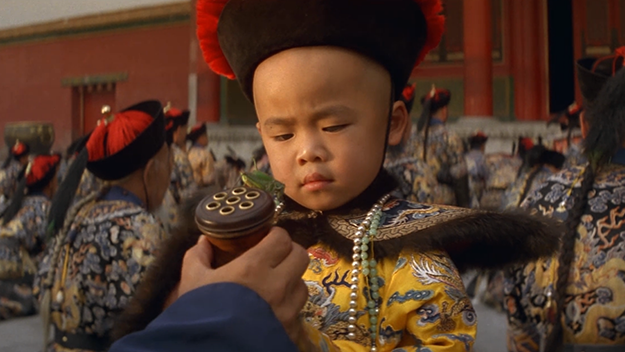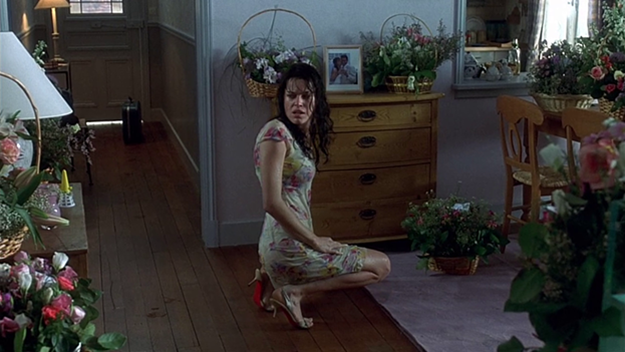Next month at the Japan Society, composer Ryuichi Sakamoto will introduce Yoji Yamada’s Nagasaki: Memories of My Son (15), a film that he agreed to score in 2014, before he was diagnosed with oropharyngeal cancer. When Sakamoto returned from his unprecedented year-long sabbatical in 2015, he completed two very different projects: Yamada’s Japanese Academy Award–winning film and Alejandro G. Iñárritu’s The Revenant (15), for which he was nominated for a Golden Globe. Marking a renewed collaboration between Sakamoto and the electronic musician Alva Noto (Carsten Nicolai) with added help from Bryce Dessner (of The National), The Revenant score is deceptively minimal but clearly abstract: ambient, bellowing drones, prickly sound effects, and multiple layers of recordings play simultaneously, interspersed with long pauses. In spite of its critical acclaim, the unconventional soundtrack was designated ineligible for an Academy Award nomination because Sakamoto’s input, as the primary composer, was supposedly indistinguishable in the mix. Alva Noto in fact manipulated and amended Sakamoto’s compositions with digital effects while Dessner contributed additional music to the score later, resulting in a uniquely collaborative effort with Sakamoto’s music at its core. The soundtrack to Nagasaki: Memories of My Son, in contrast, is assuredly traditional, bordering on old-fashioned. At 84 years old, director Yamada has described the film as the most important of his career, released in Japan to coincide with the 75th anniversary of the bombing of Hiroshima and Nagasaki. The film is a period piece set in 1948 about a grieving mother who communicates with the ghost of her son, killed by the bombing three years prior. Sakamoto’s soundtrack is somber and lovely, with the emotional resonance befitting a prestige melodrama. Together with his score for The Revenant, these two recent works demonstrate the wide range of Sakamoto’s talent, from the conventional to the avant-garde, and hints at the inclusive scope of his influences, which encompass classical music, electronic pop, ambient/experimental, and international music.
Going back to his very first soundtrack, for Nagisa Oshima’s Merry Christmas, Mr. Lawrence (83), Sakamoto set out to compose a main theme that would sound universally “exotic” (as he explained in an interview for the Criterion release of the film). Entranced by the sounds of Balinese gamelan music, he used synthesized samples of gamelan instruments to record the charming lead melody, creating a title theme that contained traces of the three main cultures referenced in Oshima’s film, a wartime account of Japanese soldiers presiding over Western prisoners at a POW camp in Indonesia. Regular beats on a woodblock create a steady assimilation of traditional Japanese percussion while the gamelan melody purposefully recalls the ringing of Christmas bells. Sakamoto recorded the soundtrack at the very end of his tenure with the techno-pop trio Yellow Magic Orchestra, and this heavily synthesized score bears a close resemblance to his compositions for the band, at a slowed-down pace. Already a celebrity in Japan as a member of Yellow Magic Orchestra (their fashionably fascist-themed concert film from this time period, YMO Propaganda (84), is not to be missed), Sakamoto both scored and starred in Merry Christmas, Mr. Lawrence, along with David Bowie. He plays a closeted POW camp commandant infatuated with Bowie’s character who faints when Bowie combats his aggression with a kiss. When Sakamoto released a single version of the film’s title theme, he titled the track “Forbidden Colours,” in a reference to the Yukio Mishima novel that also conveyed the theme of repressed homosexuality, and he had his friend David Sylvian (of the group Japan) sing the lyrics. From the mid-’80s through the ’90s Sakamoto contributed music to a diverse collection of films that includes the kitten and puppy pic The Adventures of Milo and Otis (86) and Ryu Murakami’s unabashed portrait of a timid sex worker specializing in BDSM, Tokyo Decadence (91). In the ’90s he scored films for Volker Schlöndorff, Pedro Almodóvar, Bernardo Bertolucci, and John Maybury; composed the soundtrack to Oliver Stone’s TV miniseries Wild Palms (93); and submitted a replacement score for Donald Cammell’s stupendously perverse final film, Wild Side (95).
The Last Emperor Sakamoto’s score for The Last Emperor (87) garnered him and his co-composers (David Byrne and Cong Su) an Academy Award, a Golden Globe, and a Grammy, although Sakamoto has since bemoaned the score’s lack of “flow” and crude integration into the film. He was more pleased with his next two scores for Bertolucci: The Sheltering Sky (90), a traditional, string-heavy score performed by the Royal Philharmonic Orchestra that solidified his reputation as a compelling melodist; and Little Buddha (95), a New Age experiment that fuses Indian music with chamber orchestration and subtle electronic modifications. A representative sampling of Sakamoto deep in the groove of his career comes with two films he scored for Brian De Palma, Snake Eyes (98) and Femme Fatale (02), both featured at Metrograph in a retrospective occasioned by the new documentary by Noah Baumbach and Jake Paltrow. Poignant and neo-classical, Sakamoto’s scores for these two films stage a fine counterpoint to the director’s unrelenting cynicism. De Palma’s noted cinephilia is evident in every detail of his work and his soundtracks are no exception. In Snake Eyes, Sakamoto’s leering, paranoid strings conjure some of Bernard Herrmann’s best-known scores for Hitchcock, while other cues sound more contemporary, with doses of reverb that add to the film’s oppressive claustrophobia. With a hurricane of near-Biblical proportions howling outside the labyrinthine casino setting, Sakamoto’s tasteful score affirms the film’s moral framework with ominous, weighted orchestral music underscoring the ham-fisted recurring image of a bloody $100 bill.
Femme Fatale The score for Femme Fatale is also classically inclined with dashes of electronica in the secondary cues. Sakamoto’s creative re-working of Maurice Ravel’s “Bolero” (which at the time was not in the public domain), unsubtly titled “Bolerish,” is a delicately patchworked composition that accompanies the film’s opening jewel heist and closing slo-mo sequence in Paris. Not unlike the film itself, Sakamoto’s piece is an immaculate collage of clever rip-offs and deferential references. “Bolerish” softens the march of the Ravel piece into a graceful saunter that crosses the classical standard with other familiar melodies: Gato Barbieri’s Oscar-winning title theme for Last Tango in Paris makes a passing appearance, while Erik Satie’s “Gymnopédies” echo throughout. Sakamoto and De Palma have both described Femme Fatale as a “visual symphony,” and the prominence of “Bolerish” throughout the extended opening helps stage the heist sequence as the film’s grand overture. The essential pomp and plodding drive of the original “Bolero” remains in Sakamoto’s more serene version, controlling the pace (and supporting the refined atmosphere) of the Cannes-set jewelry heist. After Femme Fatale, Sakamoto mostly scored Japanese films throughout the 2000s in between various collaborative and solo music projects, up until his year-long break in 2014. He has continuously crossed genres and pushed the boundaries of orchestral scoring since the beginning of his career, even though many of his theories—about the impact of technology, the relation between music and images, and the concept of “film time”—remain unchanged. He fleshes out some of these ideas in Elizabeth Lennard’s intuitive 1984 documentary Tokyo Melody: un film sur Ryuichi Sakamoto, which is available to watch on YouTube. Sakamoto has since abandoned the purple eye shadow, but the ideas that he expresses in the documentary are still intact. Ryuichi Sakamoto introduces Nagasaki: Memories of My Son on July 17 at Japan Society. Femme Fatale screens Monday June 27 at Metrograph. Track List:
- Theme – Merry Christmas Mr. Lawrence 2. Tyler and Serena – Snake Eyes 3. Rage – Femme Fatale 4. Theme – The Handmaid’s Tale 5. Classical Cyberspace – Wild Palms 6. Theme – Love is the Devil 7. Castalia – Illustrated Music Encyclopedia 8. Theme – High Heels 9. Theme – Gohatto 10. Zen-Gun – Illustrated Music Encyclopedia 11. Raga Kirvani – Little Buddha 12. Theme – The Sheltering Sky Margaret Barton-Fumo is the editor of a forthcoming book on Paul Verhoeven and a longtime contributor to FILM COMMENT.

